
Our school published a paper in "Nature-Genetics": Deciphering the Lychee Gene Code, Lifting the Veil of Origin and Domestication
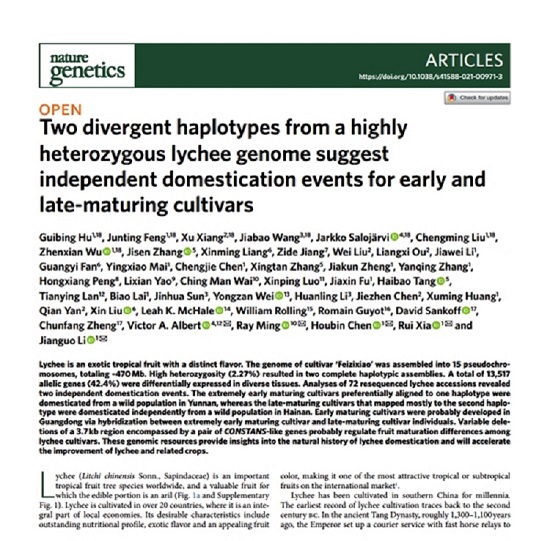
Screenshot of the paper
On January 4, 2022, Beijing time, led by the State Key Laboratory of Subtropical Agricultural Biological Resources Conservation and Utilization of our school, the paper Two different haplotypes in the high heterozygous litchi genome show that the early and late maturing cultivars are different Independent domestication (Two divergent haplotypes from a highly heterozygous lychee genome suggest independent domestication events for early and late-maturing cultivars) was published in Nature Genetics. Corresponding authors include researcher Li Jianguo, Professor Xia Rui, and Researcher Chen Houbin from the College of Horticulture, Professor Ray Ming from the University of Illinois at Urbana-Champaign, and Dr. Victor Albert from the State University of New York at Buffalo. The first authors are Professor Hu Guibing, Feng Yunting PhD student, Professor Liu Chengming, Professor Wu Zhenxian, Researcher Xiang Xu from Guangdong Academy of Agricultural Sciences, Dr. Jarkko Salojärvi from Nanyang Technological University, Singapore, and Researcher Wang Jiabao from Chinese Academy of Tropical Agricultural Sciences.
The deciphering of the litchi gene code will provide an important reference for future litchi functional genomics research, and is of great significance for promoting litchi variety improvement and high-quality industrial development. On the morning of January 4, our school held a related results conference in Hongmantang. Vice President Qiu Rongliang presided over the press conference.
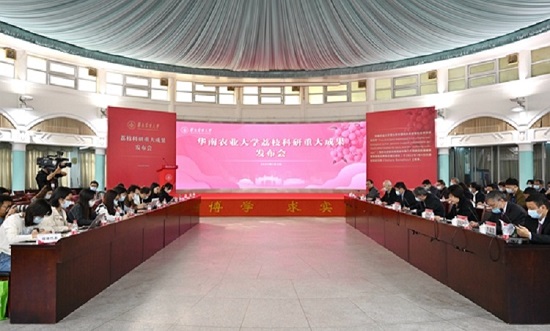
Results conference site
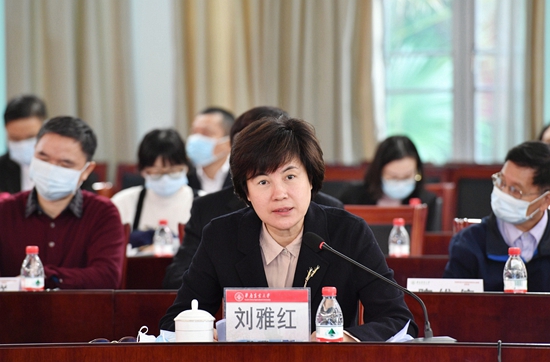
Speech by President Liu Yahong
In his speech, President Liu Yahong introduced the scientific research progress and the development of the fruit tree discipline of our school during the 13th Five-Year Plan period. She pointed out that the lychee scientific research team of our school is supported by major research results, led by regional characteristic varieties, with the core of building a brand with Huanong characteristics, and modern enterprise management as the standard to promote the close integration of pre-, mid- and post-production. Actively explore innovative work models that combine production, education and research. She hopes that the team will continue to expand the breadth and depth of research, put the wings of science and technology in the modernization of the litchi industry, and make greater contributions to polishing the golden sign of litchi in Guangdong and realizing the prosperity of the industry and the revitalization of the countryside.

Speech by Academician Liu Yaoguang
The genome is the design and navigation map for the formation of plant traits. The basic and applied research of litchi has always been one of the important research directions of the State Key Laboratory of Subtropical Agricultural Biological Resources Conservation and Utilization. Academician Liu Yaoguang, Director of the State Key Laboratory, said. The lychee genome can not only improve the understanding of the formation of important economic traits of lychee, and develop corresponding breeding and cultivation control technologies, but also provide important references for related research on other closely related species.
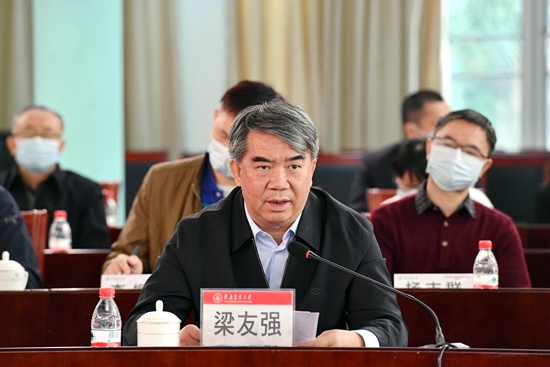
Liang Youqiang, the second-level inspector of the Provincial Department of Agriculture and Rural Affairs, delivered a speech
Liang Youqiang, the second-level inspector of the Provincial Department of Agriculture and Rural Affairs, said that the provincial party committee and the provincial government attach great importance to the high-quality development of the litchi industry. At the beginning of last year, they formulated a three-year action plan for the high-quality development of the litchi industry in Guangdong to promote the agricultural industry with “small cuts” in the litchi industry. Big change. He hoped that South China Agricultural University and related scientific research units would strengthen joint research, strive to produce more, quick, and big results, and provide strong scientific and technological support for the high-quality development of agriculture and rural areas in our province.
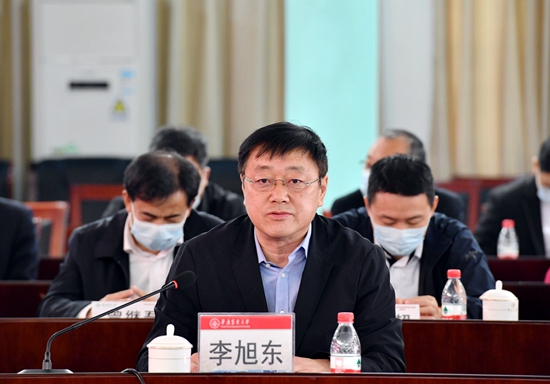
Li Xudong, deputy director of the Provincial Science and Technology Department, delivered a speech
Li Xudong, deputy director of the Provincial Department of Science and Technology, said that in accordance with the deployment of the Provincial Party Committee and the Provincial Government, we will continue to support the revitalization of the seed industry in scientific research, especially focusing on scientific research issues such as strong advantages, shortcomings, and broken points in the revitalization of the seed industry. Carry out research. He hoped that South China Agricultural University would take this major breakthrough in litchi scientific research as an opportunity to give full play to the advantages of platforms and talents to provide Huanong wisdom for the revitalization of the seed industry and agricultural modernization.

Researcher Li Jianguo introduced the main results of the litchi genome paper
At the press conference, researcher Li Jianguo introduced the main results of the litchi genome paper. The research team used the latest genome sequencing data and optimized the genome assembly strategy to complete the assembly of the pseudochromosomes of the'Feizixiao' litchi genome. It mainly contains 15 pseudochromosomal sequences, the size is 470 Mb, the heterozygosity is 2.27%, and the assembly integrity is assessed by BUSCO. 96.2%; At the same time, the structural annotation of the genome coding genes was completed, and 31,896 structural genes were obtained. The annotation completeness BUSCO assessed 94.8%, which is currently the highest assembled quality genome in Sapindus family.
The project team used 72 re-sequencing data of litchi resources to identify 3.88M high-quality SNPs, and put forward the hypothesis of “one origin center and two independent domestication events” for litchi: Yunnan is the origin center of wild litchi, which runs along the Xijiang River. Spread, forming a major habitat for wild litchi populations in Hainan; after that, Yunnan and Hainan wild litchi were independently domesticated into extra-early and late-maturing varieties, and the extra-early-maturing and late-maturing varieties were further hybridized to form early and middle-maturing varieties.
Loss of DNA fragments between COL genes
In addition, the paper systematically studied the regulation mechanism of litchi flowering from the genomic level, and found that the lack of a specific DNA sequence in litchi may be an important factor leading to the formation of different flowering periods of litchi. This DNA fragment deletion appears between a pair of CONSTANS-like (COL) genes. It may affect the flowering time of litchi by regulating the expression of these two COL genes. This DNA sequence deletion can be developed as a simple molecular marker for the selection of litchi varieties in different flowering periods. This is very valuable for the selection and breeding of litchi for flowering and maturity traits, because litchi is perishable and difficult to store. Breeding more new varieties of litchi that bloom very early or late will prolong the market season of litchi and reduce market seasonality. Sales pressure and improving the efficiency of lychee planting are very important.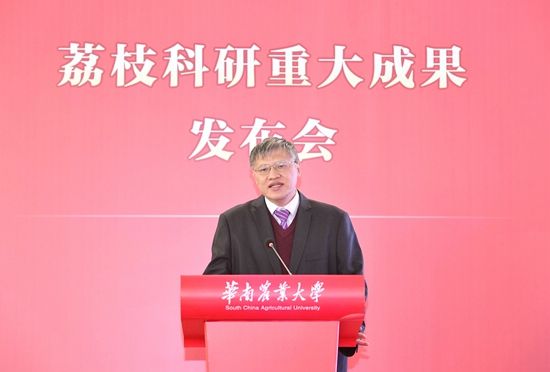
Professor Hu Guibing introduced the Litchi scientific research team and scientific and technological progress of our school
Professor Hu Guibing introduced the litchi scientific research team of our school and the progress of scientific and technological research. In 1982, South China Agricultural College and Guangdong Provincial Department of Agriculture took the lead in establishing the Guangdong Litchi Science and Technology Cooperation Group, and Professor Li Peiwen, who was then Deputy Dean of South China Agricultural College, served as the group leader; in 2008, Litchi was incorporated into 50 countries’ modern agricultural industrial technology As one of the systems, Researcher Chen Houbin was elected as the chief scientist of the National Litchi Industrial Technology System. Among the 18 post scientists in the system, 9 are from our school; now, the Litchi Technology Innovation Team of our school is a team with strong innovation ability, great international influence and age. The R&D team with a reasonable structure was named Shennong China Science and Technology Award Excellent Innovation Team in 2019.
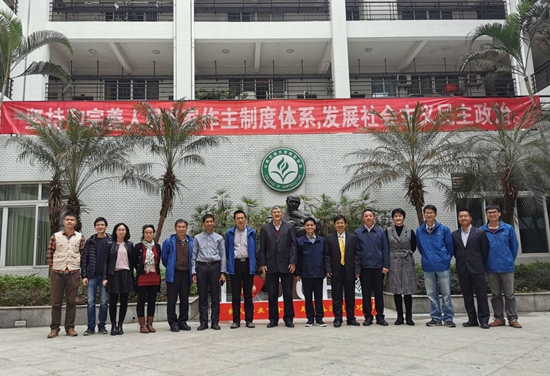
Group photo of the main members of the litchi team of South China Agricultural University
After nearly 40 years of relay research by the three generations of old, middle-aged and young people, the team bred 19 new varieties such as Bingli, Guanyin Green, Lingfengnuo, Jinggang Hongnuo, Jumeiren, etc.; published high-level journals in top journals of botany and horticulture. More than 300 level papers; published 11 monographs such as Litchi Studies; 15 authorized invention patents; won 16 provincial and ministerial-level awards, including 2 second-class national scientific and technological progress awards; established a provincial and ministerial-level science and technology platform7 Piece.
We are currently collaborating with a number of research teams at home and abroad, aiming to carry out genomic research on more Sapindus native to my country with important economic traits based on litchi genome research, such as longan and red. Maotan, soap locust (saccharanthus vulgaris), fallen bell, etc., through a broader and more comprehensive comparative genomic comparative analysis, exploratory research on the common or specific biological problems of the Sapindus family crops, the main research directions include The secondary metabolites of flower induction, special flavor and fragrance formation, the regulation mechanism of flower and fruit development, etc. Xia Rui added.
Guangming Daily, China Education News, Science and Technology Daily, China Science News, Guangdong Radio and Television, Guangzhou Radio and Television, Nanfang Daily, Guangzhou Daily, Yangcheng Evening News, Southern Metropolis Daily, Information Times, New Express, Guangdong Science and Technology News, Southern Rural News, Guangzhou Radio and other media conducted interviews and reports on the press conference. (Text/Chen Pengchen College of Horticulture Photo/Fei Siying and Zeng Ziyan College of Horticulture)


